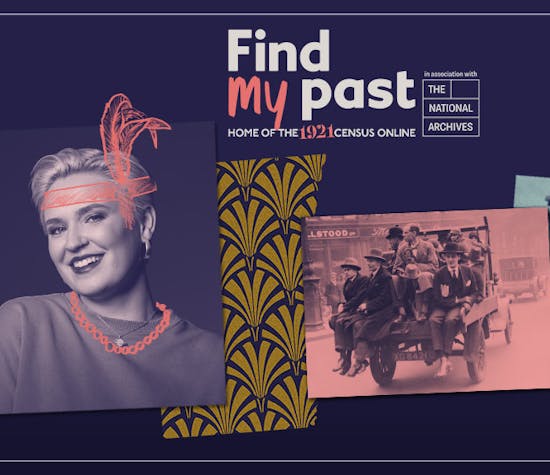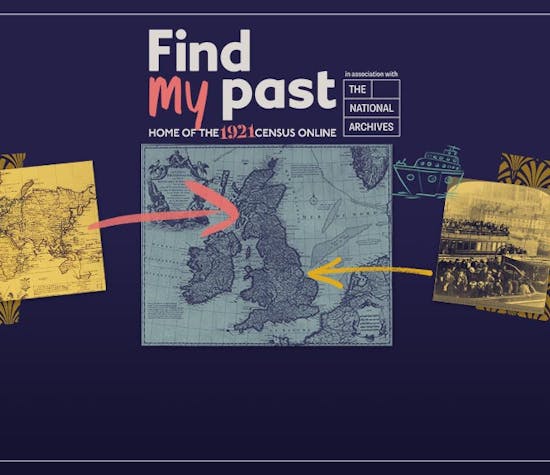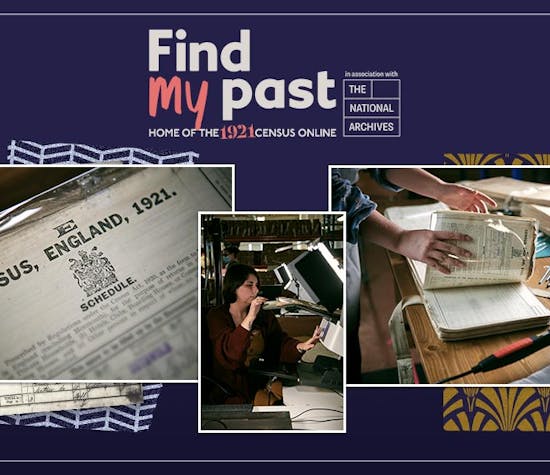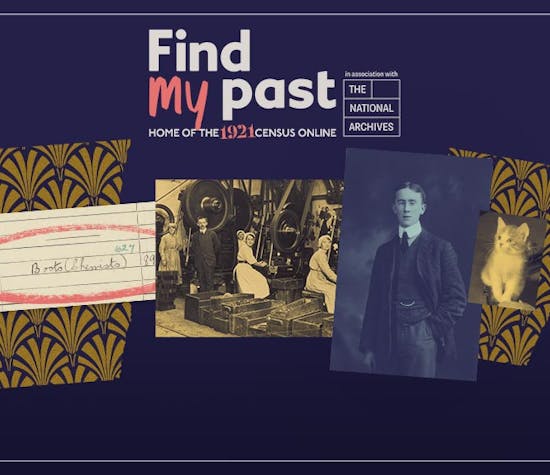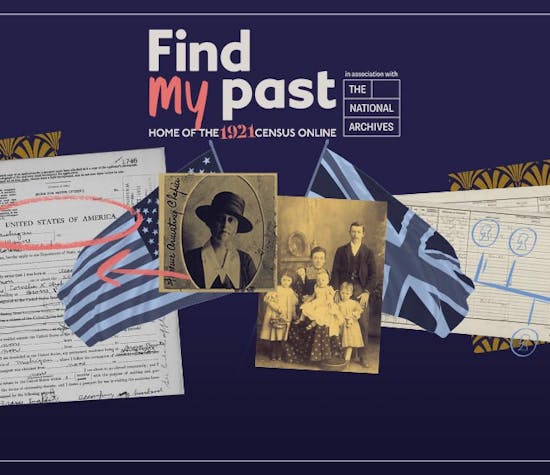Thecensus is here

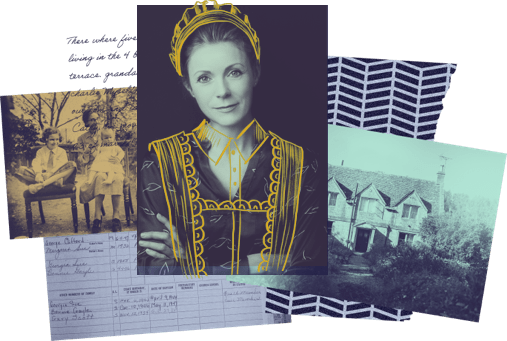
What is the 1921 Census?
Was your grandmother one of the first female racing car drivers? Or your grandfather one of the last mole catchers? The 1921 Census reveals where they were, who they were with and what they were doing one summer night a century ago.
The most extensive British census open to the public, this detailed snapshot of 38 million lives is only available online at Findmypast. We're delighted to have been chosen by The National Archives to bring it to you.
Exploring the 1921 Census
Watch our handy video to see how easy it is to unlock incredible census stories. From pinpointing the right relative to tracing house history, this must-see guide will get you started and keep you on track.
After 25 years of searching for his records, I was delighted to find my grandad on the 1921 Census, stationed in India.
Dee Clarke
Facebook postThe 1921 Census helped me to break down the most life-changing of ‘brick walls’. I've discovered my mum's birth mother and family.
Sally Colegrove
Facebook postThanks to Findmypast and the 1921 Census, we have an amazing picture of some of the people who also called our house a home.
@victorianadventure
Instagram post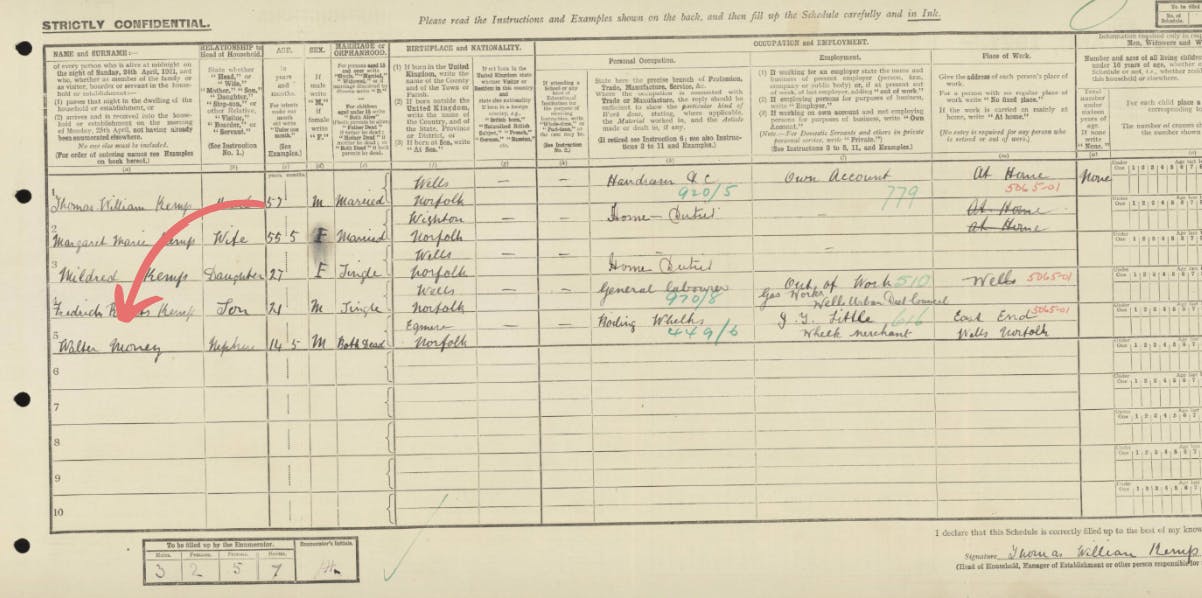
Your discoveries
Part of the family...
Lynn discovered a story that reminded her of what good people her grandparents were. A quick search of the 1921 Census revealed that Thomas William and Margaret Maria Kemp adopted one of Maria’s nephews. Walter Money’s parents were recorded as ‘both dead. He was only 14 years old at the time.
She ordered the death certificate of Walter’s mother, Eliza (Margaret’s sister), which revealed she’d died in 1912 of ‘pulmonary tuberculosis, premature parturition and shock’. Walter’s father Edward also died in 1912. The next thing on Lynn’s to-do list was to order his death certificate.
Even at 14, Walter was working, boiling whelks for John Thomas Little. After a spot of further detective work, Lynn discovered Mr Little was Thomas’ brother-in-law. So, Walter was not only adopted but given a job as well.
Lynn was delighted to learn that Walter stayed in close contact with the family, living in the same area, and even on the same road.
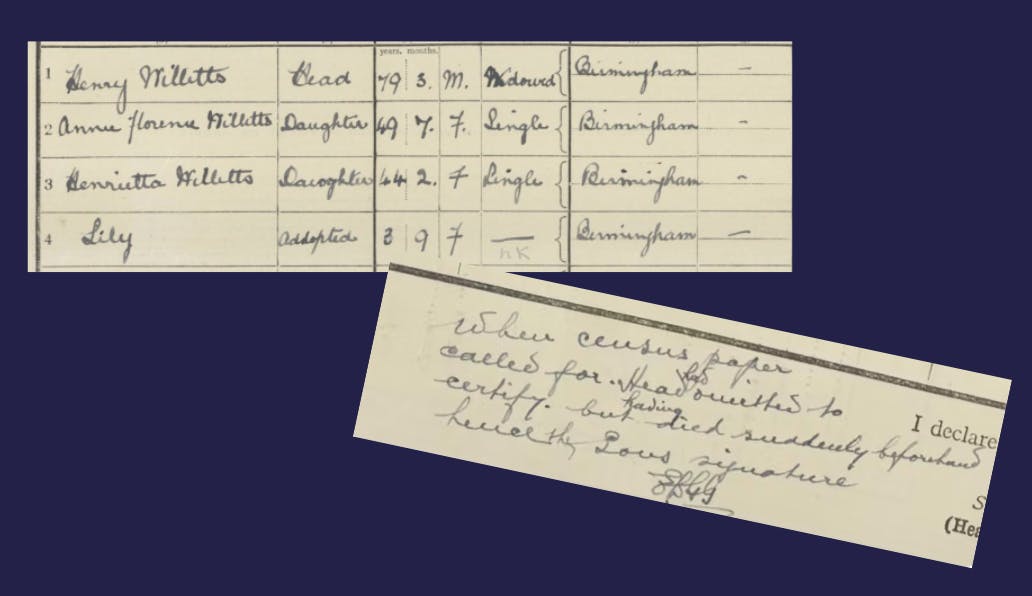
A missing piece of the puzzle
Janet’s mother Maisie was born in 1917. Maisie’s mother was Mabel, a servant in the household of John David Hannam, a commercial traveller. Back in 1920, Maisie had been adopted informally, with John as a signed witness.
Janet already knew of the family who adopted her mother. She found the widowed, 79-year-old Henry Willetts in the 1921 Census, at 10 Highgate Place, Birmingham. Also in the household were his single daughters, Annie and Henrietta, plus young Maisie, whose name was simply Lily, parent’s ‘NK’ – ‘not known’.
But even more intriguing was the note included on John David Hannam’s return. Mabel was still working for him on 19 June 1921. John filled out the return, but he didn’t sign it. Tragically, John died that very day, as we can see from this note left on the family's census return.
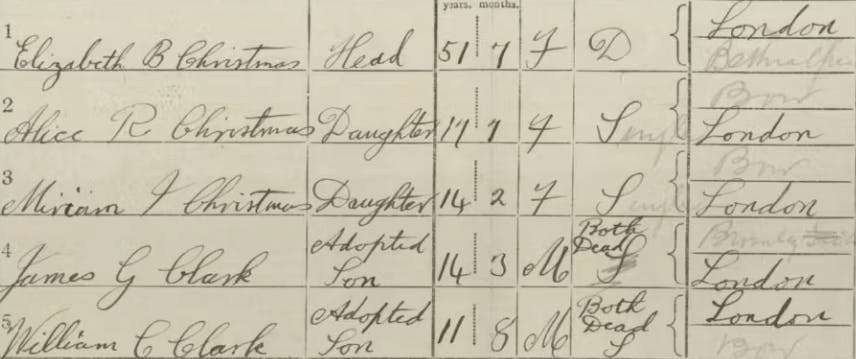
A Christmas miracle
While searching for her 2x great-grandmother, Mandy uncovered a heart-warming tale that made her rethink what she knew about her ancestor.
It proved the family story about Mary Elizabeth Christmas’ divorce, but the record also yielded some surprises: two adopted sons. Her ex-husband, James William Christmas, was a boarder in a nearby household, still describing himself as married. Mandy quickly got to work, desperate to uncover more about the mystery boys.
It turns out James and William’s mother had died in 1910, leaving their father to raise them alone. But when the First World War erupted, the father left the boys in the care of Mary and went to fight.
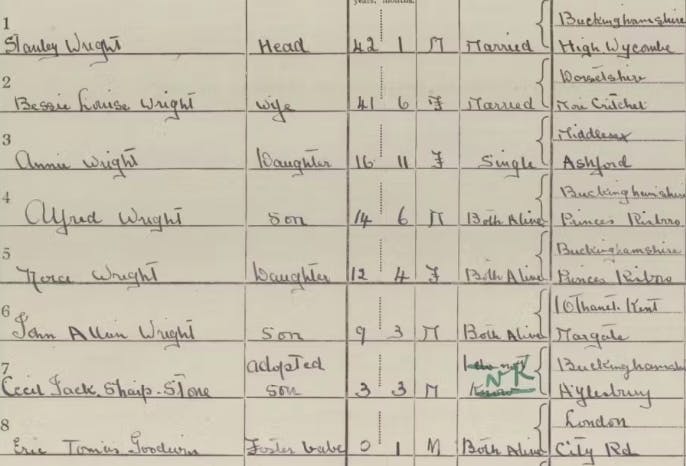
The mystery uncle
Jeni often wondered why her father wasn’t baptised until 1918 with his brother. It turned out there was more to this tale. After some searching, she found this brother was adopted. And thus began a search to uncover the true identity of Cecil Jack Sharp Stone.
Jeni already knew that Cecil was the child of a single mother and that when Cecil got married, he was going by the name Cecil Wright. The 1921 Census shed more light on the story.
Jeni opened the record for her grandparents, and there was her uncle, listed as 3 years old and adopted. It confirmed Jeni had purchased the correct birth certificate. On the Census, Stanley notes that he doesn’t know if Cecil’s parents are dead or alive. Jeni was delighted to learn that her grandmother, Bessie, was a foster mother. She was also fostering a 1-month-old baby, Eric Thomas Goodwin, in 1921.
Build the bigger picture
Frequently Asked Questions
Explore the full list of 1921 Census frequently asked questions for further information.
